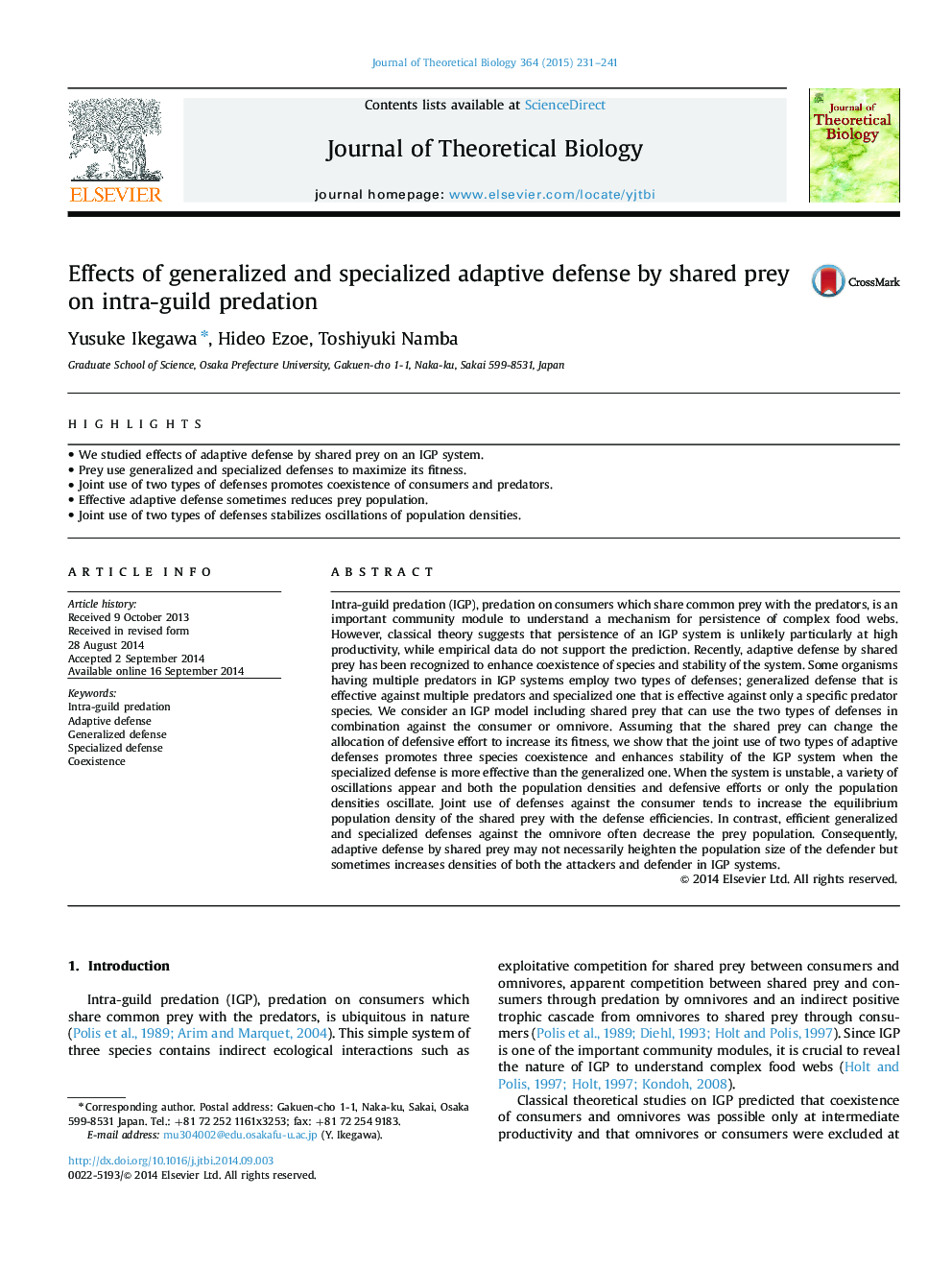| Article ID | Journal | Published Year | Pages | File Type |
|---|---|---|---|---|
| 6370091 | Journal of Theoretical Biology | 2015 | 11 Pages |
Abstract
Intra-guild predation (IGP), predation on consumers which share common prey with the predators, is an important community module to understand a mechanism for persistence of complex food webs. However, classical theory suggests that persistence of an IGP system is unlikely particularly at high productivity, while empirical data do not support the prediction. Recently, adaptive defense by shared prey has been recognized to enhance coexistence of species and stability of the system. Some organisms having multiple predators in IGP systems employ two types of defenses; generalized defense that is effective against multiple predators and specialized one that is effective against only a specific predator species. We consider an IGP model including shared prey that can use the two types of defenses in combination against the consumer or omnivore. Assuming that the shared prey can change the allocation of defensive effort to increase its fitness, we show that the joint use of two types of adaptive defenses promotes three species coexistence and enhances stability of the IGP system when the specialized defense is more effective than the generalized one. When the system is unstable, a variety of oscillations appear and both the population densities and defensive efforts or only the population densities oscillate. Joint use of defenses against the consumer tends to increase the equilibrium population density of the shared prey with the defense efficiencies. In contrast, efficient generalized and specialized defenses against the omnivore often decrease the prey population. Consequently, adaptive defense by shared prey may not necessarily heighten the population size of the defender but sometimes increases densities of both the attackers and defender in IGP systems.
Keywords
Related Topics
Life Sciences
Agricultural and Biological Sciences
Agricultural and Biological Sciences (General)
Authors
Yusuke Ikegawa, Hideo Ezoe, Toshiyuki Namba,
